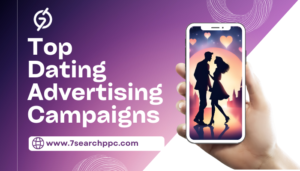Graphic Design vs. Motion Graphics: Which One is Right for Your Business?
Visual content reigns supreme. Businesses today are continually looking for ways to stand out, and design plays a crucial role in this endeavor. Two popular design choices are graphic design and motion graphics. But what’s the difference? And how do you decide which one will best meet your brand’s needs? This blog post will delve into the contrasts between graphic design and motion graphics, their unique benefits, and tips on when to use each.
What is Graphic Design?
Graphic design is the art of combining images, typography, colors, and illustrations to communicate messages visually. It includes everything from creating logos and brochures to web designs and advertisements. The primary focus of graphic design is static visuals—images that don’t move but are crafted with a purpose to engage, inform, and captivate.
Key Elements of Graphic Design:
- Typography: Strategic use of fonts to enhance readability and set a tone.
- Color Theory: Colors evoke emotions and have specific associations that resonate with audiences.
- Layout & Composition: Arrangement of design elements to create a harmonious, aesthetically pleasing piece.
- Imagery & Illustration: The use of pictures, illustrations, icons, and symbols to add depth to the design.
What are Motion Graphics?
Motion graphics are an extension of graphic design, incorporating animation to bring visuals to life. This form of design includes movement—often using graphics, text, shapes, and even video elements. Motion graphics are widely used in videos, animations, online advertisements, explainer videos, and social media.
Key Elements of Motion Graphics:
- Animation: Adding movement to elements, creating a dynamic visual experience.
- Audio Integration: Sound effects and music complement visuals, adding depth and emotional impact.
- Transitions & Effects: These bring flow and cohesiveness, helping messages unfold seamlessly.
- Storytelling: With the ability to engage over time, motion graphics often use storytelling to guide viewers through a narrative.
Graphic Design vs. Motion Graphics: Key Differences
| Aspect | Graphic Design | Motion Graphics |
|---|---|---|
| Movement | Static images only | Animated visuals with moving elements |
| Use Case | Logos, banners, print media, websites | Video ads, social media posts, explainer videos |
| Viewer Engagement | Quick, instant impact | Engages viewer over a period, typically more immersive |
| Storytelling | Limited to single-frame visuals | Allows for narrative flow, great for storytelling |
| Complexity | Simpler, fewer resources required | Complex, may involve additional software and skills |
Benefits of Graphic Design
- Quick, Immediate Impact: Static images can instantly grab attention. This is ideal for logos, posters, and ads.
- Cost-Effective: Creating graphic design materials typically requires fewer resources than animation.
- Easy Adaptability: Graphic designs are often versatile and can be repurposed across different media, from print to digital.
Benefits of Motion Graphics
- Higher Engagement: With movement, sound, and storytelling elements, motion graphics have a stronger potential to engage viewers.
- Better Storytelling: The added time factor enables brands to deliver more complex messages and guide audiences through a narrative.
- Memorable Content: Movement and sound capture attention longer, making the content more memorable and effective in conveying a message.
When to Use Graphic Design
- Brand Identity: For creating logos, business cards, or letterheads, graphic design is ideal.
- Print Media: Brochures, flyers, posters, and other print material often rely on static visuals.
- Social Media Posts: For simple social media graphics that don’t require animation, graphic design is sufficient.
- Infographics: When you need to display complex data in an easy-to-understand format, graphic design is perfect.
When to Use Motion Graphics
- Explainer Videos: If your business needs to communicate complex information quickly, motion graphics are effective.
- Social Media Ads: Animated ads are more engaging and can increase click-through rates.
- Product Demos: Motion graphics are great for showing products in action, highlighting features, and demonstrating usage.
- Brand Storytelling: For brands looking to create a deeper connection, motion graphics can help tell a memorable story.
Choosing Between Graphic Design and Motion Graphics
Both graphic design and motion graphics have their place in a marketing strategy. Here are a few tips to help you decide which one suits your needs:
- Budget: If you’re on a tight budget, graphic design can be more cost-effective.
- Time Frame: Motion graphics projects often take longer due to animation and audio elements.
- Audience Engagement Goals: For short, impactful messages, graphic design works well. For in-depth storytelling, motion graphics are ideal.
Final Thoughts
Whether you choose graphic design or motion graphics depends on your specific goals, audience preferences, and resources. While graphic design delivers instant, clear visuals, motion graphics provide an immersive, engaging experience. Both play essential roles in helping brands communicate effectively and stand out in a crowded market.
If you’re still unsure which to choose, consider consulting with a professional design team. The right choice will strengthen your brand presence and resonate with your target audience, helping your business make a lasting impact.














Post Comment